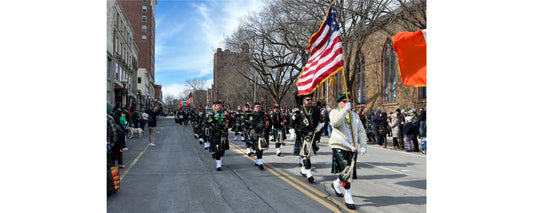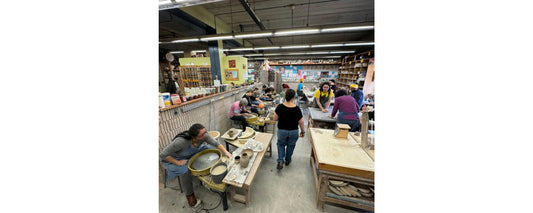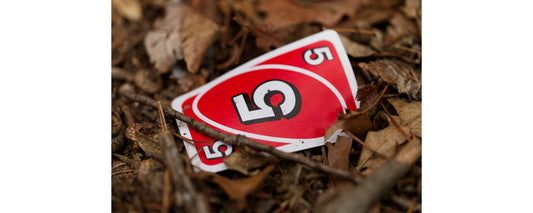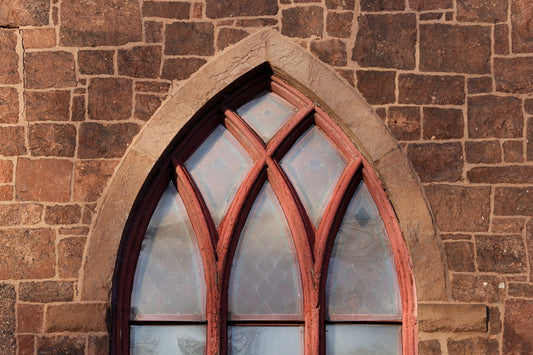By the time Shakespeare’s Twelfth Night posited music as the “food of love” in the early 1600s, some elements of the Yale University Collection of Musical Instruments (YCMI) already existed. Between its string, wind and keyboard holdings, the YCMI encompasses five centuries of passionate craftsmanship, from a circa-1550 viol made by Giovanni Battista Ciciliano to harpsichords fashioned during the instrument’s late 20th-century revival by renowned American artisans John Challis and William Hyman.
Composed of nearly 1,000 instruments, including an extensive selection of “non-western” items that go way back in time, the YCMI is “one of the most comprehensive in the world,” says curator Susan E. Thompson. Two key donors shaped its destiny. Morris Steinert, a Bavarian immigrant who moved to New York City in 1850, began his stateside musical career as a violinist in a traveling minstrel troupe. Ten years later, he moved to New Haven and opened a music store—M. Steinert & Sons—that was the first in New England to sell Steinway & Sons pianos. He also established the Steinert Family Orchestra, made up of friends and Yale University students at first, and later renamed the New Haven Symphony Orchestra.
Yale’s powers-that-be graciously allowed this new symphony to rehearse on its premises. Steinert repaid that kindness by bequeathing his treasured collection of historic instruments— largely keyboards—to the university in 1900. For more than half a century, these instruments resided in the rotunda of Woolsey Hall.
sponsored by
Then, in 1960, the family of Holyoke, Massachusetts-based heiress and philanthropist Belle Skinner came calling, offering Yale what one of her admirers once called a “collection of superlatives.” She had filled the music room of her home in Holyoke with priceless acquisitions like a three-quarter size 1736 violin by Antonio Stradivari, completed when the master was 92. “She tended to collect fine, highly decorated instruments—and she had a number of auction houses seeking these items for her at all times,” Thompson says.
Impressed by Yale’s Steinert Collection, Skinner’s heirs—including two nephews who were Yale alumni—agreed to turn over Belle’s instruments on one condition: that the university find a sufficiently museum-like setting in which to showcase them. So, the collection moved from Woolsey Hall to its current location at 15 Hillhouse Avenue, the former home of an Alpha Delta Phi fraternity chapter.
Compared to other Yale museums, the YCMI is pretty small. Proper showcasing of the instruments means that only 10 to 15 percent of the collection can be displayed at any given time. “Some items are clearly more display-worthy, and of greater interest to the public,” Thompson says, such as:
• A recently acquired piano from New Haven’s Mathushek Piano Manufacturing Co., named for the German craftsman Frederick Mathushek, a contemporary of Morris Steinert who’d immigrated to New York City in 1849. Just after the Civil War, Steinert convinced Mathushek to relocate to Connecticut. According to advertisements of the time, the company sold 30,000 pianos by the turn of the 20th century. (Mathushek, whose direct involvement with the business was brief, died in 1891.) The collection’s new piano is graced with a rosewood veneer and keys made in Ivoryton, a section of Essex, Connecticut, that once played a significant role in the international ivory trade.
sponsored by
• A trio of items from the Belle Skinner Collection that dramatically illustrates her affinity for uniquely crafted instruments, such as an 1820 Italian bass horn in the shape of a serpent, complete with vibrating brass tongue. “It sounds like a tuba or trombone, even though it has a wooden body,” says Thompson. An ornate German guitar by 18th-century luthier Joachim Tielke, considered his era’s peerless creative designer, features intricate inlays depicting classic artistic themes, like the legendary guitar-playing contest between Apollo and Pan that earned judge King Midas a set of donkey ears. Likewise, a 1778 epinette fashioned by France’s Pascal Taskin, renowned as “instrument-maker to the King,” is painted with delicately-rendered images of birds, insects, flowers and scenes from a fox hunt. This style of decoration indicates that the small keyboard-style instrument was indeed owned by an aristocratic household. Skinner purchased it with the understanding that Louis XVI had originally commissioned it for Marie Antoinette, but this has never been proven.
• An 1820 pyramid piano from the Steinert collection, which looks a bit like a grand piano with its string case stood on end. The pyramid configuration of the instrument required oblique orientation of the piano strings, so that the tallest part of the case peaks in the center. Such a configuration was an elaborate example of the more economical upright, square pianos that were gaining popularity at the time. This one features a bird’s-eye maple veneer and is topped off with an imposing carved wooden swan, painted black with gilt highlights.
• An 1830 piccolo by Asa Hopkins, who set up his own water-powered wind instrument shop on the Naugatuck River, in a part of Litchfield that earned the nickname “Fluteville.” Currently, this specimen is the only piccolo of his known to have survived.
The most striking of the collection’s gallery spaces is the one on the second floor, which displays a permanent exhibit of historic keyboard instruments. Believed to be used as a reception hall in Alpha Delta Phi days, it’s graced with 18-foot ceilings, LED lighting and ample space for the more than 20 harpsichords, clavichords, spinets and pianos in display. That last classification features renowned names like Steinway & Sons, Erard (the favored piano makers of Beethoven, Chopin and Mendelssohn), Ignaz Bösendorfer and Carl Bechstein, whose 1864 grand is the only instrument on display with documented connection to a famous person: It belonged, temporarily, to the seminal composer/conductor Richard Wagner.
Thanks to its plaster walls and wooden floors, says Thompson, this gallery’s acoustics are sublime, making it well-suited to the nearly 40 live events—lectures, master classes and public musical performances—the YCMI hosts there every year. Its monthly Sunday afternoon concert series, which runs from October to April, has welcomed acclaimed artists like the Smithsonian Chamber Players, pianists Malcolm Bilson and Gustav Leonhardt, violinist Jaap Schröder and lutenist Paul O’Dette, many of whom have utilized the collection’s playable instruments. The YCMI also has its own quartet-in-residence, the Yale Baroque Ensemble, directed by renowned violinist (and director of Juilliard’s early music program) Robert Mealy.
Though live events typically sell out, jilted enthusiasts need not despair: they’re streamed over the Internet. The rest of the time, pursuers of music history worldwide can visit the collection’s keyboards exhibit without even setting foot inside the YCMI’s door, via an online audiovisual tour.
YCMI director William Purvis emphasizes that his goals for the collection go well beyond increasing its accessibility to the outside world. He also believes, for instance, that it can and should play a larger role in the education of Yale’s own music students, at both the undergraduate and graduate level. “My feeling is that experiencing early music—and these historic instruments—is a crucial part of every student’s training,” he says.
Students of music, formal or otherwise, take note.
Yale University Collection of Musical Instruments
15 Hillhouse Ave, New Haven (map)
Tues-Fri 1-4pm, Sun 1-5pm (September-July)
(203) 432-0822 | musinst@pantheon.yale.edu
www.yale.edu/musicalinstruments
Written by Patricia Grandjean. Photographed by Dan Mims.









